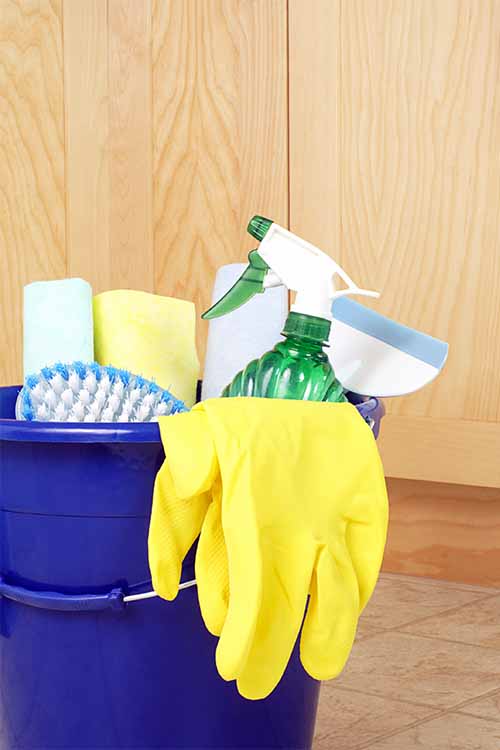Physical Address
304 North Cardinal St.
Dorchester Center, MA 02124
To clean catchers gear, wipe down the surfaces with a damp cloth and mild detergent, then air dry. Use a disinfectant spray for the helmet and shin guards.
Keeping your catchers gear clean is essential for maintaining its performance and prolonging its lifespan. Regular cleaning can also prevent the buildup of bacteria and unpleasant odors. We’ll discuss the best methods for cleaning catchers gear, including the helmet, chest protector, shin guards, and other equipment.
By following these simple and effective cleaning techniques, you can ensure that your catchers gear remains in top condition for years to come. So, let’s dive into the step-by-step process of cleaning and maintaining your catchers gear.

Credit: foodal.com
When it comes to cleaning your catcher’s gear, having the necessary supplies is crucial to ensure that you can effectively remove dirt, sweat, and odor. By preparing the right cleaning agents, soft cloths, and brushes, you can take proper care of your gear and extend its lifespan. Let’s delve into the essential cleaning supplies that you’ll need to clean your catcher’s equipment thoroughly.
Cleaning agents play a critical role in breaking down dirt and grime on your catcher’s gear. Consider using mild dish soap or a gentle detergent to clean the exterior of your gear. For tougher stains or odors, you may want to use a sports equipment cleaner designed specifically for gear cleaning. It’s important to ensure that the cleaning agent is safe for the materials used in your catcher’s gear to avoid any damage.
When cleaning your catcher’s gear, soft cloths are essential to prevent scratching or damaging the surface. Microfiber cloths are highly effective in gently wiping down the gear without leaving lint or residue behind. Ensure that you have several clean, soft cloths on hand to tackle different parts of the gear and to avoid spreading dirt and grime.
Brushes are invaluable for reaching into crevices and seams to remove embedded dirt and debris. Opt for a soft-bristled brush that won’t scratch or damage the gear. A small, soft-bristled toothbrush can be particularly useful for cleaning hard-to-reach areas such as straps, buckles, and mesh. Having a selection of brushes of varying sizes can help you tackle different areas of the gear effectively.

Credit: www.webstaurantstore.com
Cleaning catcher’s gear is essential to maintain its durability, effectiveness, and hygiene. A regular cleaning process can help extend the lifespan of the equipment and keep it free from harmful bacteria and odors. In this section, we will cover the step-by-step cleaning guide for catchers gear, focusing on helmets, chest protectors, and leg guards.
To clean catcher’s helmets, start by wiping the exterior with a damp cloth to remove any visible dirt or mud. Then, use a mild detergent solution to clean the surface of the helmet and remove any stubborn stains. Afterward, rinse it thoroughly with water and allow it to air dry. Never use harsh chemicals or abrasive scrubbing pads as it can damage the helmet’s integrity.
When cleaning chest protectors, use a soft-bristled brush to gently remove dirt and debris from the surface. Then, wipe it down with a damp cloth and mild soap to clean any remaining stains. Ensure to thoroughly rinse the protector to remove any soap residue and allow it to air dry completely before use. Avoid machine washing or using strong chemicals that can weaken the fabric or protective padding.
To clean leg guards, start by removing any detachable padding or straps. Wipe down the surface with a damp cloth to remove dirt and mud. Use a gentle detergent solution to spot clean any soiled areas, and then rinse the guards thoroughly with water. Do not submerge the guards completely in water, as it may damage the padding. Allow the leg guards to air dry completely before reassembling them for use.
Dealing with Odors: Tackling odors in catchers gear is essential to maintain hygiene and extend the lifespan of your equipment.
| Product | Description |
|---|---|
| Odor-Eliminating Spray | Designed specifically to combat tough sports gear smells. |
| Athletic Gear Deodorizer | Specially formulated to neutralize odors and provide a fresh scent. |
| Anti-Microbial Gear Spray | Kills odor-causing bacteria and fungi while eliminating smells. |
Keeping your catchers gear clean is essential for maintaining hygiene and ensuring its longevity. By following these hygiene tips, you can ensure that your gear stays in top condition and free from harmful bacteria.
As a catcher, personal care plays a crucial role in maintaining the cleanliness of your gear. Always wash your hands thoroughly before and after each game or practice session to minimize the transfer of dirt and germs. Additionally, make it a habit to wear clean undergarments every time you put on your gear. This simple practice can go a long way in preventing the buildup of sweat, odor, and bacteria.
Bacteria can easily thrive in moist environments, which makes your catcher’s gear susceptible to their growth. To prevent this, it’s important to properly dry your gear after each use. After a game or practice session, wipe down your gear with a clean cloth or towel to remove any excess moisture. Leave your gear in a well-ventilated area to air dry completely before storing it. Avoid packing your gear in a bag while it’s still damp, as this can promote bacterial growth and unpleasant odors.
Regularly inspect your gear for signs of mold or mildew, especially in areas that tend to accumulate moisture, like padding and straps. If you notice any growth, use a mild detergent or sports gear cleaner to thoroughly clean the affected areas. Be sure to follow the manufacturer’s instructions when cleaning your gear to avoid damaging the materials.
In addition to proper drying, using disinfectant sprays or wipes can also help in preventing bacterial growth. After each use, lightly spray or wipe down the interior surfaces of your gear to ensure it remains free from harmful bacteria.
Remember, staying proactive when it comes to cleanliness and hygiene is key to maintaining your gear’s quality and performance. By following these personal care and bacterial growth prevention tips, you can keep your catchers gear clean and in excellent condition for a long time.
Drying and storage are crucial steps in maintaining the longevity and effectiveness of your catchers gear. Proper techniques not only extend the life of your gear but also keep it in top condition, ready for the next game. Additionally, preventing mold and mildew is essential to keep your gear smelling fresh and free of harmful bacteria.
To ensure your catchers gear dries thoroughly, start by wiping it down with a clean, dry cloth. This removes any excess moisture and prevents the growth of mold or mildew. It’s important to disassemble your gear, if possible, so that no hidden areas remain damp. For components that cannot be disassembled, make sure to use a cloth or towel to reach every nook and cranny.
Next, choose a well-ventilated area for drying your gear. Hang it up or lay it flat on a clean surface, making sure that each piece is spread out evenly. This allows air to circulate freely and aids in the drying process. Avoid direct sunlight or heat sources that may cause damage or warp the materials.
Speed up the drying process by using a fan or dehumidifier in the room. This helps to remove excess moisture and prevents any lingering dampness. Remember to periodically check and rotate the gear to ensure that all sides are thoroughly dried.
To keep your catchers gear free from mold and mildew, there are a few additional steps you can take. First, after each game or practice, take the time to wipe down and clean your gear. Use a mixture of mild soap and warm water to remove any dirt, sweat, or debris that may have accumulated.
| Tip: | Mix a small amount of bleach (1 part bleach to 10 parts water) and spray it on the gear to kill any bacteria or odor-causing agents. Remember to rinse thoroughly after using bleach. |
|---|
Once the gear is clean, allow it to air dry completely before storing it. This helps to prevent the growth of mold or mildew during storage. Avoid storing your gear in a damp or humid environment, as this can encourage the growth of bacteria. Instead, find a cool and dry area, such as a closet or equipment bag, to keep your gear safe.
For added protection, consider using moisture-absorbing products, such as silica gel packets or moisture-wicking inserts, in the storage area. These products help to absorb any excess moisture and keep your gear fresh and dry. Remember to replace them regularly for maximum effectiveness.
By following these proper techniques and taking steps to prevent mold and mildew, you can ensure that your catchers gear remains in excellent condition, ready to perform at its best every time you step onto the field.

Credit: www.amazon.com
When it comes to maintaining safety standards for your catchers gear, regular inspections and replacing worn-out parts are crucial.
Inspect your catchers gear before and after each game to ensure proper functionality and safety.
Replace any worn-out parts immediately to maintain the integrity of the gear.
To keep your catchers gear in top condition, follow these easy cleaning methods. Regular maintenance ensures durability and player safety. By using gentle cleaning agents and proper techniques, you can extend the lifespan of your gear. Remember, cleanliness is key to a successful game on the field.